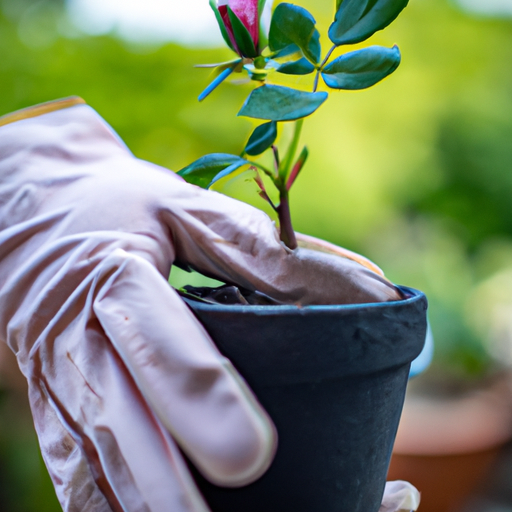Introduction
Transplanting a potted rose to the ground can be a rewarding experience for any gardener. Whether you want to give your rose more space to grow or simply prefer the aesthetics of a garden bed, this step-by-step guide will help you successfully transplant your potted rose. In this article, we will discuss the necessary preparations, the transplanting process, and post-transplant care to ensure your rose thrives in its new home.
Preparations
Before you begin the transplanting process, it is important to gather the necessary tools and materials. You will need a shovel, a trowel, gardening gloves, compost or organic matter, a watering can or hose, and a suitable location in your garden for the rose to thrive. Make sure to choose a spot that receives at least six hours of sunlight per day and has well-draining soil.
Transplanting Process
1. Water the potted rose thoroughly a day or two before the transplant. This will help loosen the soil and make it easier to remove the plant from the pot.
2. Choose a cool and cloudy day to minimize stress on the rose during the transplanting process.
3. Start by digging a hole in the ground that is slightly larger and deeper than the pot the rose is currently in. This will allow the roots to spread out comfortably.
4. Gently remove the rose from its pot, being careful not to damage the roots. If the plant is root-bound, you can loosen the roots slightly with your fingers.
5. Place the rose in the prepared hole, making sure it is at the same depth as it was in the pot. Backfill the hole with a mixture of soil and compost, gently firming it around the roots.
6. Water the transplanted rose thoroughly to settle the soil and eliminate any air pockets. Add more soil if necessary.
7. Mulch around the base of the rose with a layer of organic matter, such as wood chips or straw. This will help retain moisture and suppress weed growth.
8. Stake the rose if needed, especially if it is a tall or climbing variety. This will provide support until the roots establish themselves in the new location.
Post-Transplant Care
After transplanting, it is crucial to provide proper care to help the rose adjust to its new surroundings. Here are a few essential tips:
– Water the rose regularly, keeping the soil moist but not waterlogged. Aim for deep, infrequent watering rather than frequent shallow watering.
– Monitor the rose for signs of stress or disease. Prune any damaged or diseased branches to promote healthy growth.
– Apply a balanced rose fertilizer according to the package instructions to provide essential nutrients.
– Protect the rose from extreme weather conditions, such as strong winds or frost, especially during the first few weeks after transplanting.
– Keep an eye out for pests and take appropriate measures to control them, if necessary.
Conclusion
Transplanting a potted rose to the ground can be a straightforward process if you follow the right steps. By preparing the rose, choosing the right location, and providing proper care, you can ensure a successful transplant and enjoy a beautiful, thriving rose in your garden. Remember to be patient and give the rose time to adjust to its new home. With a little care and attention, your transplanted rose will reward you with stunning blooms for years to come.




